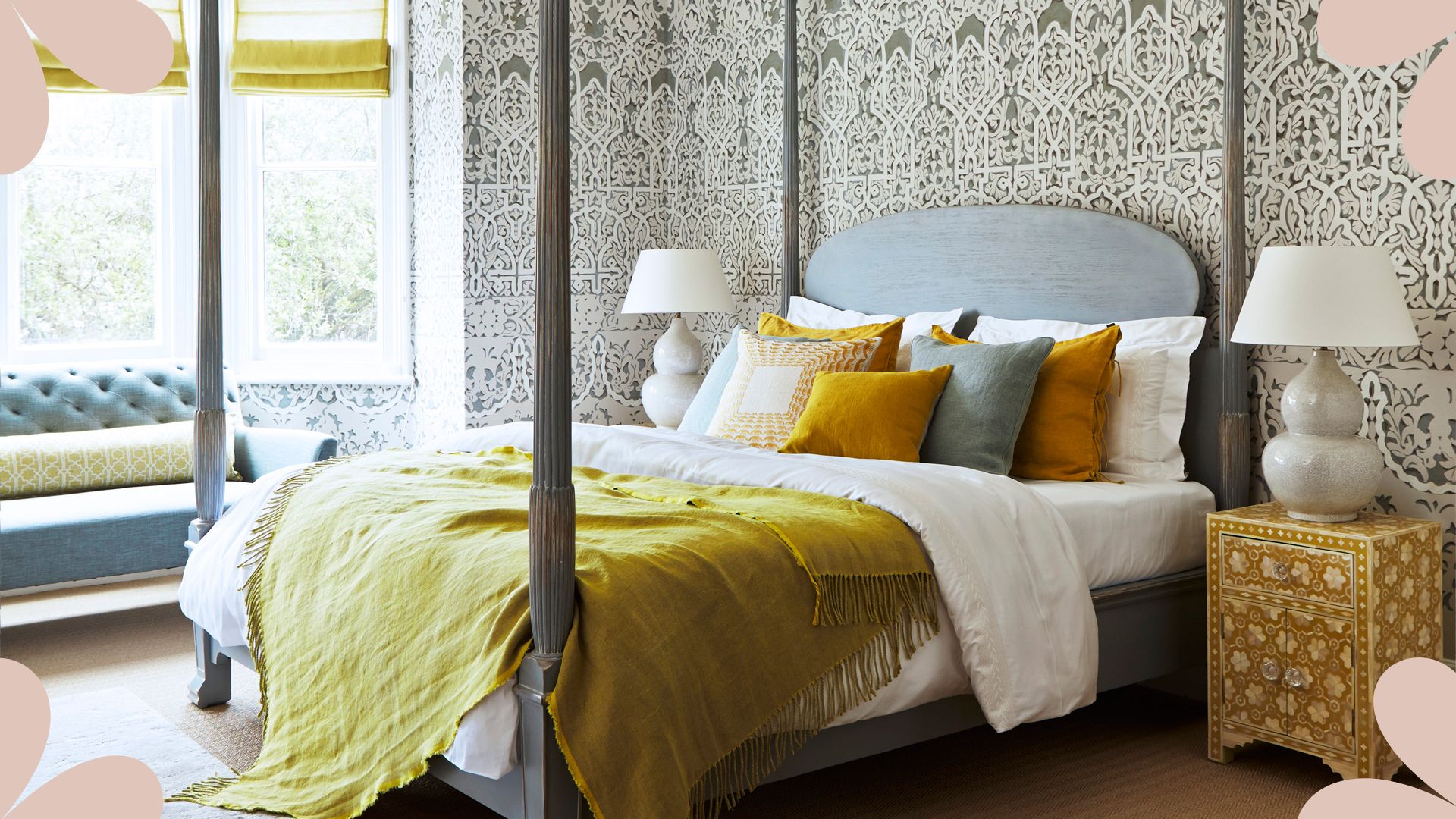Understanding Feng Shui Principles for Bedroom Layout: Bedroom Layout Ideas Feng Shui

Feng Shui, an ancient Chinese practice, focuses on harmonizing energy flow to create balance and well-being. When applied to bedroom design, Feng Shui principles aim to foster restful sleep, positive energy, and a sense of peace.
The Importance of the “Command Position” in a Bedroom
The “command position” in Feng Shui refers to the placement of the bed where you can see the door without being directly in line with it. This position is considered favorable as it allows you to feel secure and in control of your environment.
- Avoid placing the bed directly in front of the door: This position is known as the “death door” in Feng Shui and can lead to feelings of vulnerability and anxiety.
- Ensure the bed is positioned diagonally to the door: This allows you to see who enters the room while maintaining a sense of privacy.
- Use a headboard to provide support and stability: A headboard creates a sense of grounding and can help to enhance the “command position.”
Energy Flow (Chi) in a Bedroom
Feng Shui emphasizes the importance of positive energy flow (chi) throughout a space. In a bedroom, this means creating a calming and harmonious environment that promotes relaxation and restful sleep.
- Minimize clutter: Clutter blocks the flow of energy and can create a sense of chaos and disharmony.
- Use soft lighting: Bright lights can disrupt sleep and create a feeling of restlessness. Instead, opt for dim lighting or use lamps with warm, inviting bulbs.
- Create a sense of flow: Avoid placing furniture in a way that creates obstacles or blocks the flow of energy. Ensure there is easy access to all areas of the room.
Colors, Shapes, and Materials for a Harmonious Bedroom
Feng Shui principles suggest using specific colors, shapes, and materials to create a harmonious and balanced bedroom environment.
- Colors: Earth tones such as beige, brown, and green are considered grounding and calming, while pastel shades like pink and blue can promote peace and tranquility.
- Shapes: Rounded shapes are believed to promote harmony and flow, while sharp corners can create tension and disharmony. Consider using rounded furniture or adding soft edges to sharp corners.
- Materials: Natural materials such as wood, cotton, and wool are considered to be more harmonious than synthetic materials. Opt for natural fabrics for bedding and curtains and incorporate wooden furniture pieces.
Feng Shui Tips for Specific Bedroom Elements

Feng Shui principles guide the arrangement of elements within a bedroom to promote positive energy flow and enhance overall well-being. These tips offer practical advice on incorporating specific elements to create a harmonious and restful space.
Mirrors in the Bedroom, Bedroom layout ideas feng shui
Mirrors can amplify energy and reflect light, making their placement crucial in Feng Shui. While they can be beneficial in certain areas, they can also disrupt the flow of energy in a bedroom.
- Avoid placing mirrors directly opposite the bed: This can disrupt sleep and create feelings of anxiety. The reflected image of the sleeping person can create a sense of unease and disturb the flow of energy.
- Position mirrors strategically to reflect positive elements: Mirrors placed strategically can reflect positive energy, such as natural light from a window, creating a sense of openness and brightness.
- Use mirrors to enhance a small bedroom: A mirror strategically placed can create the illusion of more space, making a small bedroom feel larger and more airy.
Placement of Windows and Doors
Windows and doors are considered entry points for energy, making their placement vital for optimal energy flow in a bedroom.
- Ensure the bedroom has a clear path for energy to flow: Avoid placing the bed directly in front of a door or window, as this can create a sense of vulnerability and disrupt sleep.
- Consider the direction of the windows and doors: The direction of windows and doors can impact the type of energy that enters the room. In Feng Shui, it’s important to align these elements with the favorable directions for the bedroom.
- Utilize curtains or blinds to control energy flow: Curtains or blinds can help to regulate the flow of energy from windows, allowing for privacy and a sense of security.
Plants and Flowers in the Bedroom
Plants and flowers can bring a sense of life and energy to a bedroom. However, it’s essential to select the right plants and flowers for a peaceful and restful environment.
- Choose plants that promote relaxation and tranquility: Plants like lavender, jasmine, and chamomile are known for their calming properties.
- Avoid plants with strong scents or those that are associated with negative energy: Some plants, such as cacti, are believed to attract negative energy.
- Keep plants well-maintained and healthy: Dead or dying plants can attract negative energy and create a sense of stagnation.
Elements to Avoid in the Bedroom
Clutter, sharp edges, and disturbing imagery can disrupt the flow of energy and create a negative environment in the bedroom.
- Minimize clutter: Clutter can create a sense of chaos and obstruct the flow of energy. Keep the bedroom clean and organized.
- Avoid sharp edges: Sharp edges, such as those found on furniture or décor, can create negative energy and disrupt sleep.
- Limit disturbing imagery: Avoid placing images that are violent, disturbing, or evoke negative emotions in the bedroom.
